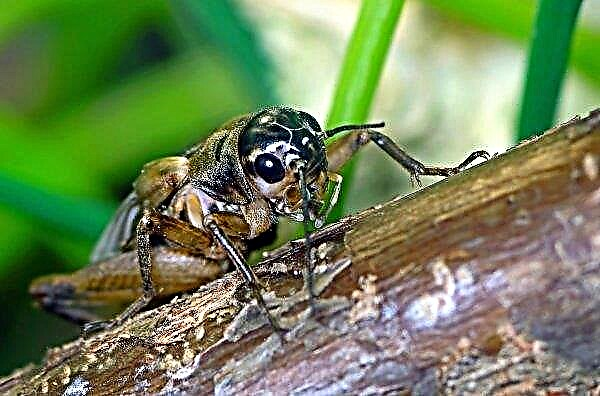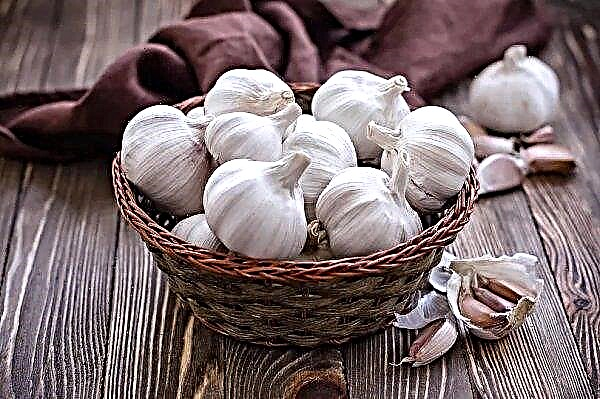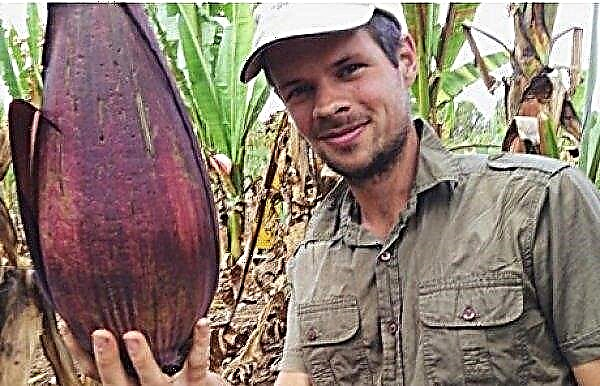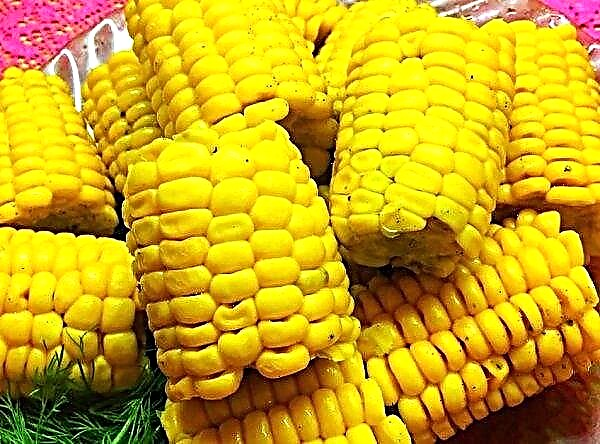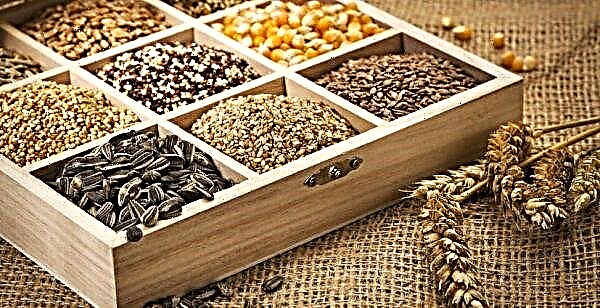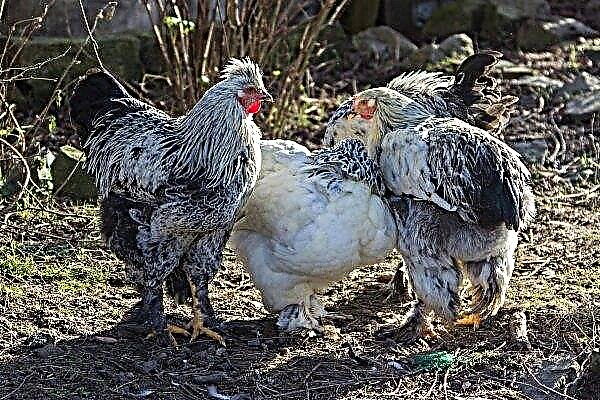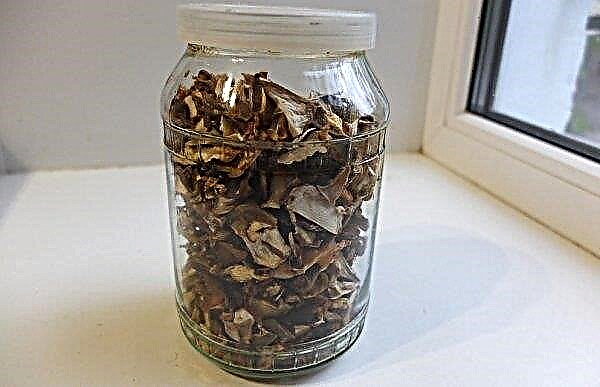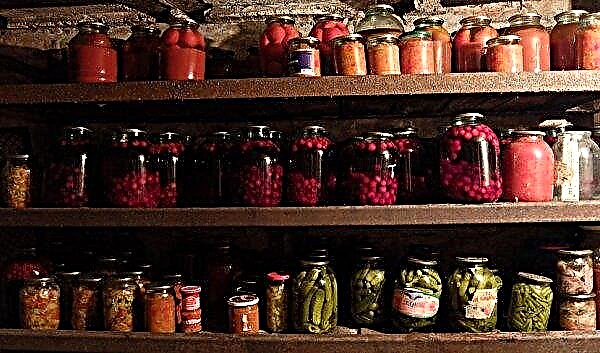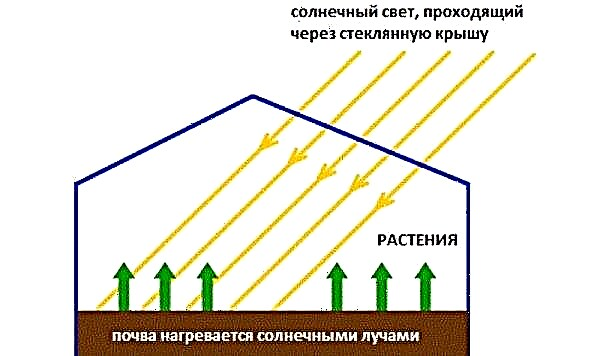Many gardeners use evergreen conifers for landscaping, and Nordman fir is one of the most beautiful species of these trees. It is used as a bright element of landscape design, and in natural conditions it is found in the mountains of Georgia, Armenia, Azerbaijan and the Caucasus, due to which it received the second name - Caucasian fir. The botanical description of the culture, the best varieties, as well as the features of planting, care and use of the tree - further in the article.
Botanical description and characteristics of the species
The Latin name for this species of fir is Abies Nordmanniana (Abies Nordmannian). The tree belongs to the Pine family and received such a name in honor of the professor of botany Alexander von Nordman, who first described it in 1835-1836.
Did you know? The age of fir can be determined by the branches of a tree. Annual growths on them grow in separate tiers, and each year a new "floor" is formed.
Description and characteristics of fir:
- The height of adult specimens is about 50 m, and the width of the crown reaches 7 m. Each year, the tree adds about 15 cm in growth.
- The root system is pivotal and powerful, penetrates deep into the soil.
- The diameter of the gray trunk can reach 2 m. Young trees have a smooth bark, but cracks appear on it with age.
- Shoots are yellow or light brown, quite soft. Elastic wood has a white-red color.
- Kidneys are ovoid, brown. They have almost no tar.
- The branches form a conical or pyramidal crown of regular shape, which descends to the ground.
- The length of flat fir needles is 2–4 cm, and the thickness does not exceed 1 mm. They have a blunt tip and densely cover the branches.
- The color of the needles depends on the variety of the plant and can be green, golden, bright emerald or gray-blue. The upper surface of the needles is glossy, and on the bottom two white stripes are noticeable.
- Fir begins to bloom and bear fruit from the age of 30–70 years (depending on variety). The flowering period falls in May, and pollination is carried out by the wind.
- Male inflorescences are red, have the shape of spikelets. Female flowers grow on top of the crown and are oval green earrings.
- Cones are directed upwards, their length is 10–20 cm, and their width is up to 5 cm. Young fruits have a green color, and after ripening they turn brown.

Popular varieties
There are several varieties of Nordman fir, which differ from each other in external signs. Each gardener can choose one of them for himself, depending on what composition he wants to create on his site.
Did you know? For the entire time of the Caucasian expedition, Alexander von Nordman assembled a collection of 2,000 names of plants and animals. As a reward for this achievement, Tsar Nicholas I personally awarded the scientist with a diamond ring.
The most popular varieties of Caucasian fir:
- Golden Spider (Golden spreader). Representatives of this variety are characterized by very slow growth - 10 years after planting, their height does not exceed 1 m. The needles are painted in an unusual golden-white color, and their length does not exceed 2 cm.

- Jadwiga (Jadwiga). These trees have a fairly long, but soft needles. The lower part of the needles is white, and the top is light green, which gives the variety a special decorative value. The crown below is formed by strong fluffy branches, and tapers to the top, therefore visually resembles a pear.

- Pendula (Pendula). The tree grows very slowly, forming an elongated silhouette. This variety is susceptible to adverse climate conditions, but has a particularly original weeping crown shape.

- Borjomi (Borjomi). Representatives of this variety are grown mainly in regions with a warm climate. A feature of the tree are cones that have a purple-violet color.
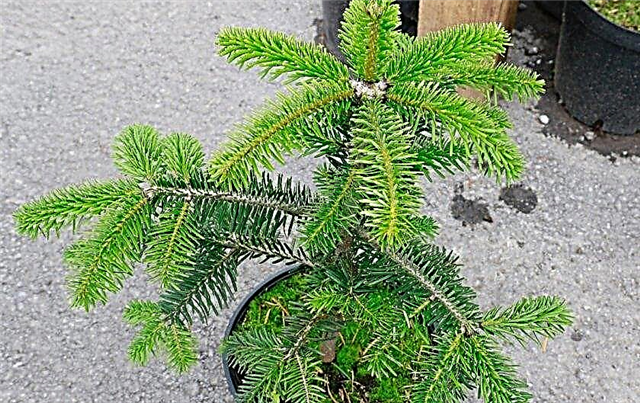
- Hunwell (Hunnewell). A dwarf variety with a maximum height of 70 cm. The needles have a rich silver-green color with a bluish tint.

Landing
Planting this coniferous crop is best done in spring or September, so that the tree has time to take root before frost. It is recommended to grow Nordman fir in sunny areas, but it can grow in partial shade. The root system of the plant develops well in light and nutritious soil containing a sufficient amount of moisture. In autumn, it is necessary to dig up the soil in the chosen place in order to destroy the pest larvae wintering in it.
Planting material is best purchased in nurseries, preferring premium seedlings with closed roots. Healthy specimens have soft and evenly colored needles without visible damage. Young trees that have reached the age of 5–7 years are better rooted in the open ground.
Important! Nordman fir has a developed root system, so it is recommended to plant it at a distance of not less than 3 m from other trees and buildings.
Step-by-step landing instructions:
- Dig a landing hole with a diameter of about 60 cm and a depth of 80 cm, leaving it at least 14 days for shrinkage of the soil. When planting several trees, a distance of at least 2.5 m is left between them.
- Prepare a nutrient mixture for filling the wells. It should contain 15% river sand, 15% humus, 40% peat and 30% clay.
- Add to the resulting substrate a little complex fertilizer for conifers.
- Lay gravel or gravel at the bottom of the landing pit. The thickness of the resulting layer should be about 10 cm.
- Pour on the drainage a little nutritious soil mixture prepared earlier. To form a small hill out of it.
- Lower the roots of the seedling in the pit so that the root neck is at the level of the earth's surface. Sprinkle the recess with the remaining nutrient substrate.
- Drive a vertical support near the fir, attach a seedling to it.
- Water the tree with warm water. If planting was performed in the spring, then shade the fir with non-woven material to protect it from sunburn and accelerate rooting.
- Mulch the earth around the trunk with wood chips or dry bark of conifers.

Fir Care
For normal growth, the tree needs moisture and nutrients, so watering and top dressing play a key role in fir care activities. In addition, you need to pay attention to measures to care for the soil around the plant and organize winter shelter when growing crops in areas with a cold climate. Compliance with such care rules will prevent the appearance of diseases and pests, but if this still happened, then they take the necessary steps to eliminate the problem.
Video: How to plant and care for fir
Watering and feeding
Seedlings can dry out due to lack of moisture in the soil, so they need to be watered. But it is impossible to overmoisten the soil, because this leads to the appearance of diseases and harms the tree.
Important! After the tree reaches adulthood, you can refuse to make fertilizers, i.e. a powerful root system receives all the necessary nutrients from the soil.
Basic rules for fertilizing and irrigation of crops:
- during the first year after planting a young tree, watering is performed regularly as the soil around the trunk dries up;
- they begin to irrigate plants in early spring - this contributes to their awakening after a winter dormant period;
- during drought, adult trees are watered 2 times a week, and with sufficient rainfall and moderately warm weather - about 2-3 times per season;
- in hot weather, you can additionally spray the crown with warm water - this procedure is carried out early in the morning;
- to feed young seedlings in March, 40 g of nitroammophos are applied per 1 m² of area;
- spring top dressing of adult trees is enough to perform 1 time in 3 years, using ready-made fertilizers for conifers (for example, "Kemiru universal").

Loosening and mulching
The fir root system responds well to surface loosening of soil. This procedure facilitates the access of oxygen, water and fertilizers to the underground part of the tree, and also helps to destroy pest larvae. Loosening is necessarily carried out in autumn and spring, and weeds periodically destroy weeds around the trunk.
For a long time, you can keep the region of the near-trunk circle of the Nordman fir moist and loose using mulching. To do this, the surface of the earth near the tree is sprinkled with dry pine bark or chips. The thickness of the mulch layer is usually 5–7 cm.
Did you know? In Europe, fir is put at home for Christmas instead of a Christmas tree and pine. Such popularity is explained by the fact that the needles of a tree do not crumble for a long time even after its felling.
Pruning
The crown of the Nordman fir has the correct shape, so it looks beautiful on the site even without cropping. The exception is dried and broken shoots - they must be removed in early spring using a sharp secateurs. If some branches of the tree were affected by frost, then they need to be cut at the end of May, when the probability of late frosts disappears.

How long has it been growing
According to the rate of development, the tree belongs to slow-growing, reaching 10 m in height by the age of 30. The total lifespan of Caucasian fir can be about 500 years. The age of some specimens of this species of coniferous crops reaches 700 years.
Did you know? The largest exporter of Christmas trees in the world is Denmark. To this end, about 12 million coniferous plants are grown here annually.
Winter preparations
Nordman fir is best grown in regions with warm summers and moderately cold winters.Therefore, when cultivating a plant in a more severe climate, it is necessary to take care of shelter. Mature trees can tolerate frosts down to –30 ° С, but young specimens begin to freeze already at –15 ° С.
To prepare fir for wintering, they perform the following actions:
- the area of the trunk circle is mulched with peat or dry chips, forming a layer of 10-12 cm;
- the branches of young trees are wrapped with non-woven material, removing it only after stable warm weather - adult specimens need such shelter only in frosts below –25 ° С;
- small seedlings on top are additionally covered with branches of spruce branches.

Possible diseases and pests
The tree shows a stable immunity to diseases and pests, but becomes vulnerable if the care recommendations are not followed. Excessive watering, which leads to the appearance of fungal infections, is especially detrimental to the plant.
The main diseases and pests of Nordman fir:
- Rust. The causative agent of the disease is a fungus, and the main symptom is orange bubbles on the needles. The needles of the tree begin to turn yellow and dry, which can lead to the death of shoots. The affected areas are removed by secateurs, treating the cut sites with garden varieties. The crown is sprayed with a 1% solution of Bordeaux fluid or the Abiga-Peak preparation.

- Brown shute. The infection is fungal in nature and manifests itself in early spring. At the same time, a thick black-brown coating can be seen on the needles of the tree, which provokes yellowing and withering of the needles. The diseased specimen is treated with Oxychoma, having previously removed all infected areas.
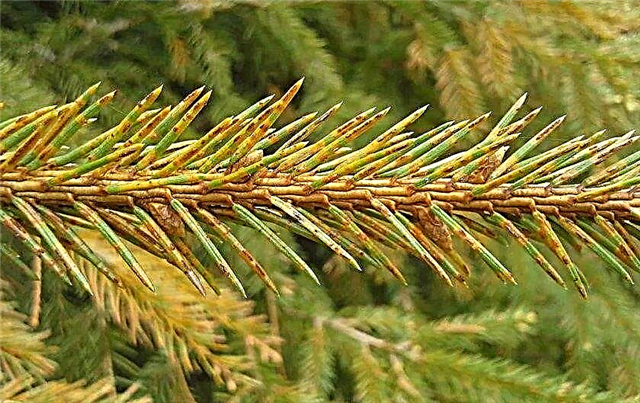
- False shield. The insect eats the sap of the tree, causing the needles to dry out. Copper dew appears on the shoots, which is the result of the life of the pest. A false shield is cleaned from the branches with a brush, and special traps with glue from insects are also installed on the tree.
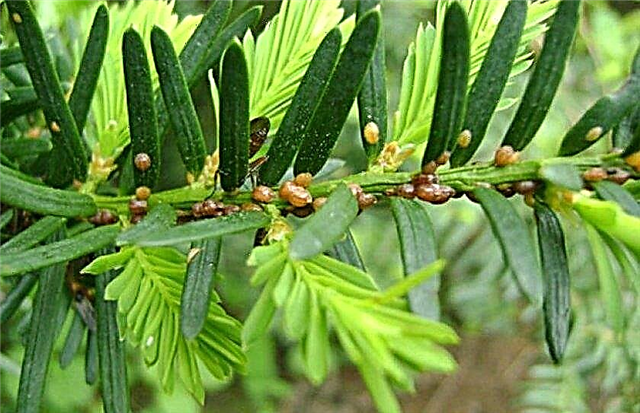
- Spider mite. The pest envelops the fir with a thin cobweb, causing yellowing of the needles. Over time, the needles become brown, and the tree dries up. You can get rid of the tick with the help of the Aktellik acaricide, spraying the crown with it according to the instructions.

- Hermes. A white coating on the surface of the needles testifies to its appearance on fir. With a minor lesion, all infected areas need to be cut and burned. You can get rid of the pest with the help of a special drug “Fufanon”.

To prevent infection, it is recommended to follow such simple preventive measures:
- use high-quality planting material;
- adhere to the planting scheme;
- comply with watering and dressing schedules;
- loosen the soil in the area of the trunk circle;
- carry out sanitary pruning annually;
- cover young trees well for the winter.
Important! During preparation and use of the working solution of fungicides and insecticides, rubber gloves and a respirator must be worn. Spraying is carried out in dry and calm weather.
Transplant Features
Nordman fir reacts negatively to transplant. At the same time, the risk of damage to the root system is very high, so the tree can weaken, fall ill or even die as a result of moving to a new place. When planting, you need to immediately find a permanent place for the plant on the site, so that in the future you do not have to transplant it.
Breeding methods
Nordman fir can only be propagated by seed. But to carry out this process at home is quite difficult, because the percentage of germination is very small.
Video: Fir propagation by seeds
To propagate this coniferous crop, you need to perform the following actions:
- In September, collect unopened cones for harvesting planting material.
- Extract the seeds. Wrap them in a paper towel and store in the refrigerator until the end of December.
- Stratify planting material. To do this, mix it with sand, wrap it in a damp cloth and put it in the refrigerator for 1-2 months.
- At the end of February, prepare a container with loose soil mixture, consisting of garden soil, sawdust and sand, taken in the same amount.
- Plant seeds in a container, deepening them into the soil by about 2 cm.
- Put the container in a sunny and warm place (+ 23 ° C). Periodically moisten the earth from the sprayer, carry out surface loosening.
Important! You can plant sprouts obtained from seeds in a permanent place after 4 years. With an earlier transplant, the plants will not be able to take root and die.
After emergence in summer, a container with sprouts is taken out to the garden, shading plants from bright sunlight. When the young shoots grow a little, they are dived into separate larger pots. In winter, containers with seedlings are dug in an open area, covering sprouts with spruce branches.

The use of wood in landscape design
Due to its unpretentiousness and ease of cultivation, Nordman fir is often cultivated on sites as an ornamental plant.
Depending on the variety, in landscape design, a tree can be used in several ways:
- dwarf specimens are planted on alpine hills;
- tall trees are used for landscaping large areas and creating malls;
- form lush compositions of fir, larch, juniper, arborvitae and mountain ash;
- individual copies are planted as a tapeworm;
- the culture is used to decorate rocky gardens;
- dwarf varieties are placed in containers for landscaping balconies and terraces.
Nordman fir is one of the most unpretentious coniferous crops, but it is recommended to grow it only in regions with moderately frosty winters. Using the information presented in the article, each gardener will be able to independently plant a seedling and provide him with the necessary care. And the variety of varieties of Caucasian fir allows you to choose a tree that is best suited for a particular site.












